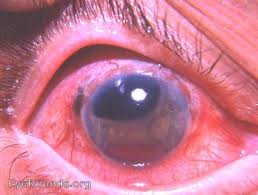Glaucoma is a complicated disease in which damage to the optic nerve leads to progressive, irreversible vision loss. It afflicts more than 65 million people and it is expected to afflict 80 million people worldwide by 2020.
Glaucoma is a very misunderstood disease. Often, people don’t realize the severity or who is affected.
A great deal of people mistakenly thought people could tell if they had glaucoma due to symptoms, or that it was easily cured, or that it did not lead to blindness. Actually, people often don’t realize the severity or who is affected. Hereinafter are six key facts about glaucoma.
1. Glaucoma is the second leading cause of blindness in the world
Glaucoma is the second leading cause of blindness in the world, according to the World Health Organization. It is the leading cause of blindness among African Americans. Glaucoma can cause blindness if it is left untreated. Unfortunately, approximately 10% of people with glaucoma who receive proper treatment still go to blindness.
2. There is no cure (yet) for glaucoma
There are several treatments available, including drugs and surgery which are possible to halt further loss of vision but none of them can restore sight once it has been lost.
3. Everyone is at risk for glaucoma
Everyone from babies to senior citizens is at risk for glaucoma. Older people are at a higher risk for glaucoma but babies can be born with glaucoma (approximately 1 out of every 10,000 babies born in the United States). Young adults can get glaucoma, too. African Americans in particular are susceptible at a younger age. African Americans ages 45-65 are 14 to 17 times more likely to go blind from glaucoma than Caucasians with glaucoma in the same age group.
4. There may be no symptoms to warn you
As for people with open-angle glaucoma, the most common form of glaucoma, there are virtually no symptoms. Eye pressure usually cause pain. Vision loss begins with peripheral or side vision. You may compensate for this unconsciously by turning your head to the side, and may not notice anything until significant vision is lost. The best way to protect your sight from glaucoma is to get tested. Once you have glaucoma, you have to treat immediately.
5. Nearsightedness and glaucoma are interconnected
A US study shows that those who are nearsighted nearly twice as likely to also develop glaucoma. Those who had higher levels of myopia appeared to be at higher risk of glaucoma as well. The findings only show that nearsightedness and glaucoma often co-occur, not that one causes the other.
6. Glaucoma starts with an injury in the brain, not the eye
People often thought that the first signs of the disease were in the retina. In fact, recently they found that the earliest damage was at the other end of the optic nerve, in the mid-brain, which lost its ability to receive information from optic nerve fibers.

